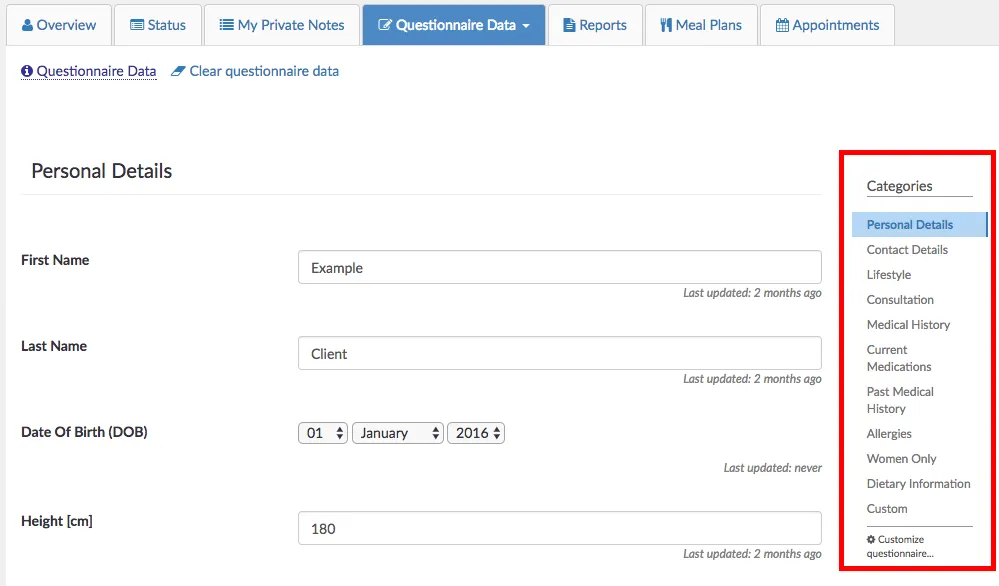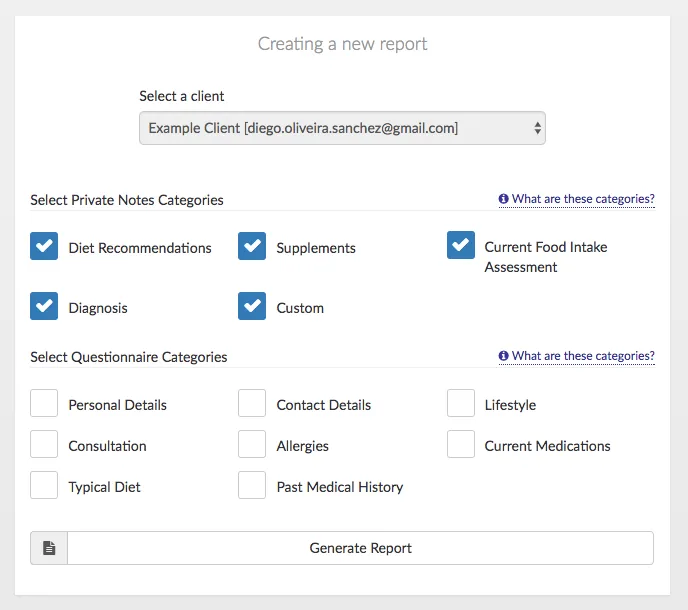This article describes what client data categories are, and how they can help you keep your data tidy. For a tutorial on how to manage your category names, please check this other article
NutriAdmin allows you to store your client data in a tidy and organized way. There are two kinds of data in each client record you store in the software:
- Questionnaire data (completed by clients for you)
- Private notes data (written by you during, or after a consultation with your client)

Within questionnaire and private notes data, NutriAdmin sub-divides fields into categories. This article will teach you what is the importance of categories, how to manage them, and how they can help you be more organized.
What are categories?
When you review any of you client records, either checking questionnaire data or private notes, you will notice a list of categories on the right hand side of your screen.

Clicking on any category name will jump the position of your screen to the appropriate kind of data. These categories are designed to ensure you always know where everything is. By default, NutriAdmin includes the following categories:
| Questionnaire data | Private notes data |
|---|---|
|
|
|
Categories are also used when creating reports. When you click on New Report on NutriAdmin's dashboard and you choose a client, the software will ask you which data categories you wish to include in your report. Having your data organized by categories means you can later just tick a few boxes to get a completely customized report with barely any effort!

Now that you know what categories are, you can learn how to manage client data categories